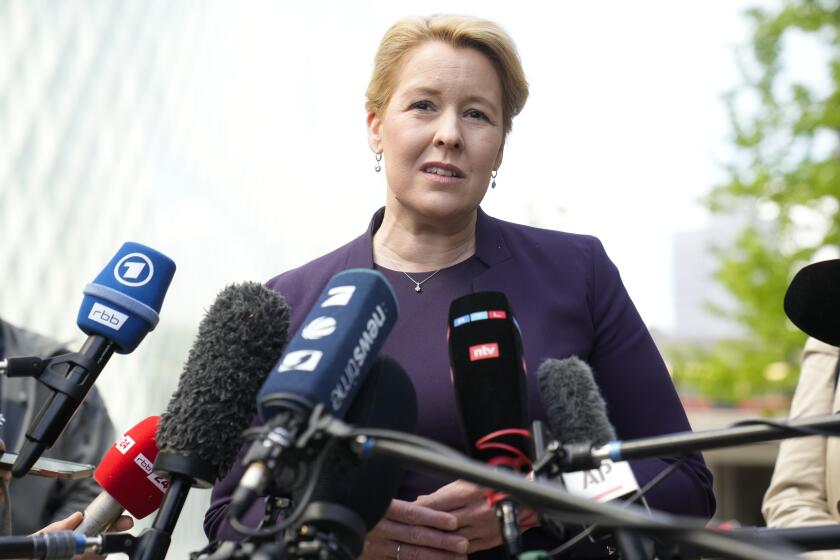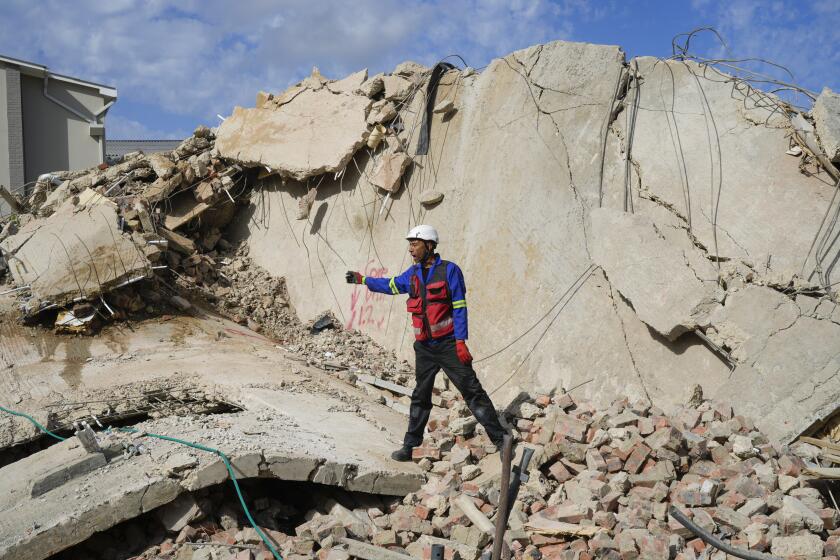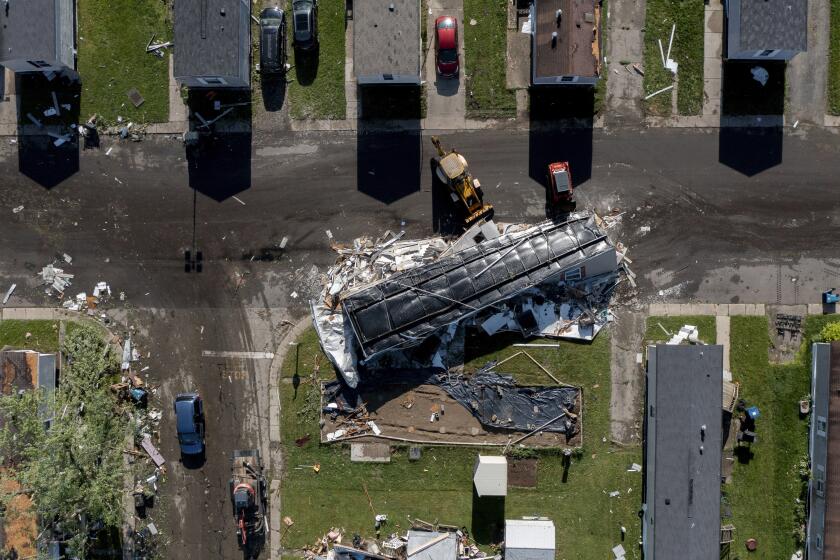Afghan Aid Handed Out, With Charges of Favoritism
With no home, no husband and no prospect of a job, Shalla is sure she is due a share of the food flowing from an outside world finally ready to feed the hungry maw that is Afghanistan.
But the 28-year-old with three daughters complains that she received only a 1-pound bag of flour in the first citywide distribution Monday, while others trundled home with carts laden with wheat, oil, lentils, blankets, buckets and all-purpose tarpaulins.
“It all goes to the wakils,” the shrouded widow said, blaming the village elders who influence relief workers in the division of supplies. “They make the lists and provide for themselves and their families first.”
Aid is suddenly making its way into this country racked by occupation, civil war and bloody power struggles for the last 23 years. The Soviet-built Friendship Bridge from Uzbekistan was grudgingly opened Sunday by the government there. Food is arriving via roads from Iran and air shuttles from other neighboring countries to feed a hunger shared by a third of Afghanistan’s 25 million people. Even though access is expected to improve daily, roads remain vulnerable to bandits and armed stragglers, U.N. spokesman Yusuf Hassan said.
Still, the simultaneous arrival of belated aid and subfreezing temperatures has forced relief workers into a hasty triage. Some recipients bemoan what they see as less than what they deserve, while others sell the supplies to earn money to buy what they want.
Organizations such as Care International, the U.N. World Food Program and the Afghan agencies that are their partners are steering new jobs toward women, especially widows, who were often left hungry and hopeless by the Taliban, who considered them an underclass. Aid is also being aimed at rural communities hit by drought to prevent the perception that Kabul, the capital, is the main recipient of the world’s sudden largess.
“If this happens, the rural people will flee to Kabul and we’ll have a worse IDP problem,” said World Food Program manager Fayyaz Shah, using the agency shorthand for “internally displaced persons.”
The focus on hiring women for the thousands of jobs in need assessment, supply coordination and distribution is nothing new for the humanitarian aid groups that have been active in Afghanistan throughout its recent tumultuous decades. But in the wake of the brutal Taliban regime, which forbade women to work or even venture outside the home without a male relative as an escort, the need to elevate women’s rights and opportunities is all the more pressing, relief experts say.
The World Food Program employs 3,600 women to make pasta in their homes for delivery to other needy families around the country. A similarly sized network of widows’ bakeries will resume later this month after it was suspended because of the U.S.-led bombing that began Oct. 7, said the emergency project director, Laurent Saillard.
At the Agency Coordinating Body for Afghan Relief, program officer Shoaib Harris said he has received hundreds of applications from English-speaking, computer-savvy young Afghan women for two new jobs. The hunger for knowledge fostered a thriving network of clandestine girls schools whose students’ skills are now sorely needed, Harris said.
For many Afghans, though, the quest for female emancipation takes a back seat to simply surviving the winter.
Abdul Aruf, his wife and their eight children know nothing about the affirmative action behind the windfall they carted away to an abandoned hovel where they have been squatting for three years. Although two of the three people who peered in a few days ago to assess their eligibility were women, all Aruf said he noticed was the precious green card they left authorizing the maximum handout.
A toothless, wizened patriarch who looks half again as old as his 50 years, he said it would take him months to earn enough as a porter at Kabul’s central market to buy the relief goods he took home Monday.
Does the worldwide focus on Afghanistan and its repressed women give him hope his wife and six daughters might one day secure jobs and escape poverty? “If God is kind, this could happen,” Aruf said with more amusement than expectation.
Mindful of the damage Taliban rule inflicted, other agencies have sought to ease the deprivation of war widows by providing them with seeds and tools for kitchen gardens.
But getting women in meaningful numbers into the work force is an objective that will take years, if not decades.
“Women are still forbidden to work in some districts of Kabul, and some who try to step out of traditional roles are treated badly,” said Eid Mohammed, a field assistant for a UNICEF-funded aid center.
After an abortive attempt to distribute aid Saturday, when 9,000 thronged the open-bed trucks dispatched to supply them, Monday’s handouts were made with regimental order. Armed and baton-wielding guards formed the burka-clad women and roughhewn men into lines that snaked hundreds of yards over parched, dun-colored flatland. The only deviations were the occasional sales of relief goods to flocks of traders.
“Not everyone wants wheat. Maybe he wants to pay his rent or buy shoes,” said Wahiddullah, a 25-year-old father trained as a blacksmith but able to earn twice as much buying the wheat, getting it milled and selling the flour at a 20% profit.
Though intended to fill stomachs instead of pockets, the aid is nevertheless having its desired effect, said Shah of the World Food Program. “We look at it as an income transfer.”
More to Read
Start your day right
Sign up for Essential California for news, features and recommendations from the L.A. Times and beyond in your inbox six days a week.
You may occasionally receive promotional content from the Los Angeles Times.







